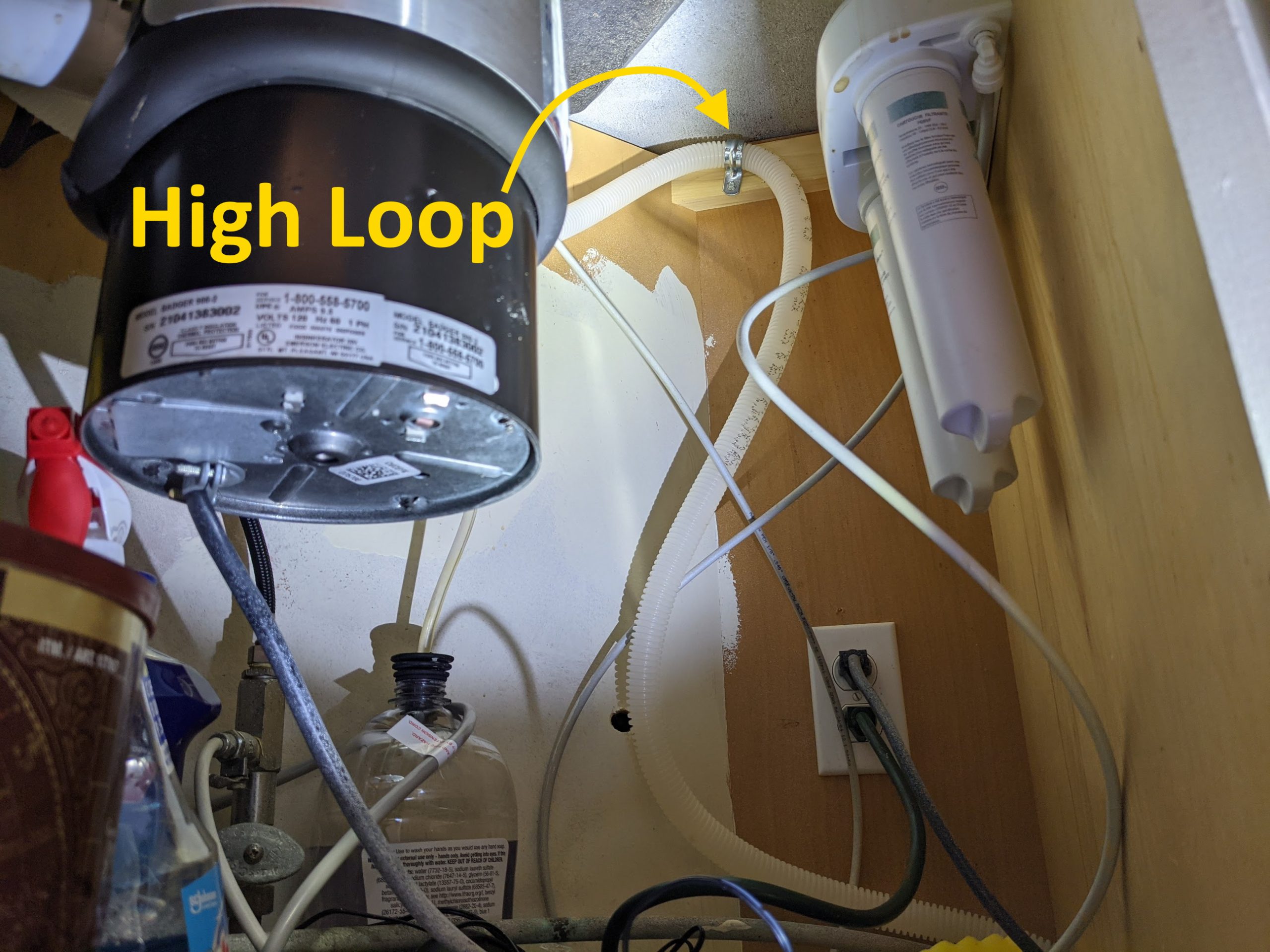Table of Contents
PinPoint Home Inspections Mississippi does dozens of home inspections each month and one of the more common defects we find is a missing high loop on a dishwasher drain line. A high loop in a dishwasher is a crucial component that serves as a preventive measure against water backflow. By installing a high loop in the dishwasher drain hose, you create a barrier that prevents wastewater from the sink or garbage disposal from flowing back into the dishwasher. Even though this is one of the more common issues we find, it’s also one of the easiest to fix.

What is a high loop?
A high loop is when the dishwasher drain line is raised before the connection to the undersink drainage in the kitchen. The drain line is secured toward the top of the sink. It should be attached as high as possible in the cabinet, preferably above the lowest point of the sink, to be most effective. The end of the drain line should attach to the sink drain pipe above the P-Trap and should not terminate at the food waste disposal. When the disposer is activated, it can pump waste water back into the dishwasher.
Why do I need a high loop?
You need a high loop in your dishwasher for a key reason: to prevent water contamination and ensure the efficient operation of your appliance. The high loop, created by elevating the dishwasher drain hose, acts as a barrier against backflow. Without this protective measure, dirty water from the sink or garbage disposal could flow back into the dishwasher during drainage.
In practical terms, a high loop serves as a safeguard, maintaining the cleanliness of your dishwasher and preventing potential health hazards. It’s a simple yet crucial solution to enhance the hygiene of your kitchen appliances, contributing to the overall reliability and longevity of your dishwasher.

How do I install a high loop?
The easiest way to install a high loop is to put a screw into the side or back of the undersink cabinet and loop the drain line over the screw. Many will use a zip tie to secure the drain line to the screw. Follow these step-by-step instructions to ensure a proper installation:
Step 1: Materials needed
Before you begin, gather the necessary materials:
- Dishwasher high loop kit or materials (typically includes a hose bracket)
- Screwdriver
- Hose clamp
- Pliers
- Zip ties (optional)
Step 2: Identify the Drain Hose
Locate the dishwasher’s drain hose. This is usually a flexible plastic or rubber hose connected to the dishwasher’s drainage outlet.
Step 3: Find a Suitable Location
Identify a suitable location for the high loop. The high loop should be positioned as high as possible under the sink cabinet, securing it against the back wall.
Step 4: Install the Hose Bracket
If your high loop kit includes a hose bracket, install it on the back wall of the cabinet. Use a screwdriver to secure the bracket in place. Make sure it’s positioned to support the drain hose in the high loop configuration.
Step 5: Create the High Loop
Raise the dishwasher drain hose to create a loop that reaches the highest point possible under the sink cabinet. Use the hose bracket to hold the hose in place. Ensure the loop is higher than the sink or garbage disposal inlet.
Step 6: Secure the High Loop
If needed, use a hose clamp to secure the high loop in place. Tighten the clamp using a screwdriver, ensuring the loop remains elevated.
PinPoint Home Inspection goes through all of the systems of the house and visually inspects and/or tests them to make sure they meet the minimum standards required by the Mississippi Real Estate Commission. We also identify the age and functionality of house components; such as the HVAC (air conditioning and heating), water heater, electrical systems, plumbing, etc for future maintenance purposes. We serve Jackson, Madison, Clinton, Canton, Brandon, Flowood, Gluckstadt, Pearl, Florence, Byram, Terry, Crystal Springs, Hazelhurst, Brookhaven, McComb and surrounding areas of Central Mississippi.
Contact Us
For any questions that you may have, book your inspection online and I’ll try to get you the help you need! Also, feel free to contact me at 504-301-8162 to walk you through it.
